Somatic cell count (SCC) is an indicator of milk quality. High SCC levels in milk usually indicate that an infection such as mastitis is present as the cow releases white blood cells to try and fight the infection.
Low-SCC milk is easier to process, can be used to manufacture more products and is an indication of a healthy herd. Because of this, processors pay bonuses for having low-SCC milk and penalise high-SCC milk but, irrespective of this, low-SCC milk makes more profit for the farmer. The target is to produce milk with an SCC of less than 200,000 cells per ml and most processors offer a bonus for achieving this. Milk produced above 400,000 cells per ml is too high and limits what processors can do with the milk.
Mastitis is the usual cause and this can be present in the clinical form (clots in the milk, swollen quarters, etc) or the subclinical form (no obvious symptoms but high SCC nonetheless). Pre-stripping cows before milking will help to identify the clinical cases. Milk recording and using the California Milk Test (CMT) will help to identify the sub-clinical cases.
When quota was an issue, there was a good incentive to dry off or cull high-SCC cows. Now that quotas have gone, there is a temptation to hold on to these high-SCC cows. However, this is a risky practice. Not only will these cows increase the SCC levels in the bulk tank, they could also spread infection to other cows.
So what is the best way to control SCC? Hygiene is critical as prevention is better than cure. Best practice is to pre-strip each quarter before milking and disinfect hands between cows. Wear disposable gloves when milking as these are easier to clean. Milk out the cow fully and disinfect teats with teat spray after milking. Change milk liners after every 2,200 milkings. If roadways are dirty, cows should stand in a clean yard after milking to allow the teat canal to close. This is not a big issue now, but it will be later in the year when roadways get wet.
The other main indicator of milk quality is total bacterial count (TBC). This measures the amount of bacteria coliforms in the milk. High TBC indicates either poor hygiene at milking, an inadequate machine washing routine or ineffective cooling.
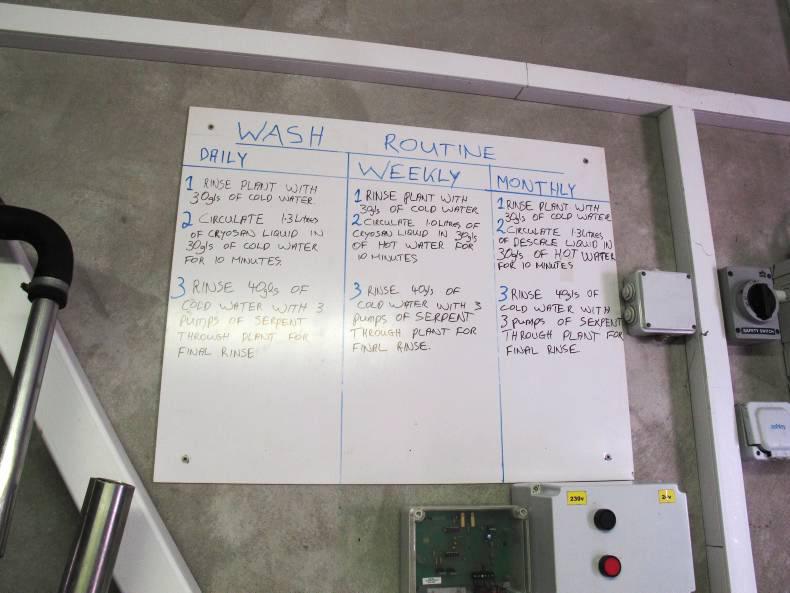
1 Using the correct wash routine is essential for reducing TBC levels and TCM residues in the milk. A poor routine will leave traces of milk in the line where bacteria will grow. Detergents and sterilisers should be used according to instructions and the plant must be rinsed out properly after use. Write up the wash routine on a chart so everybody knows what it is.
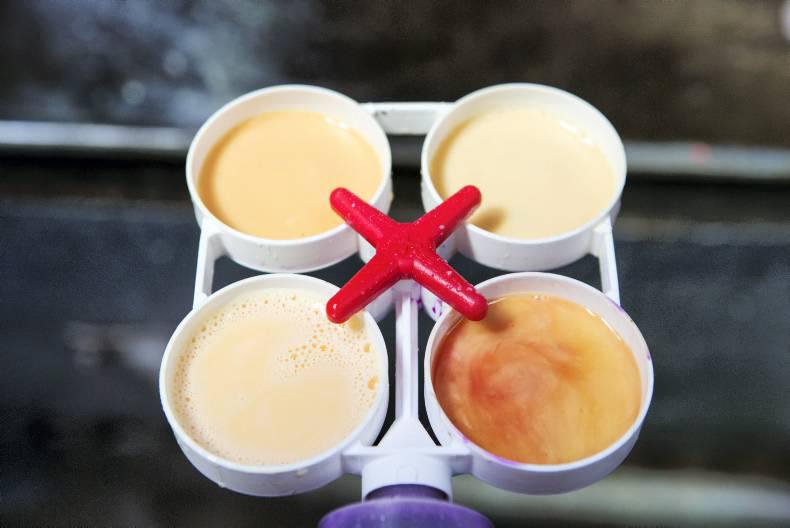
2 Use milk recording results to identify high-SCC cows and use the CMT test to identify which quarter is high. In this picture, the front right quarter is infected but the back left appears high also while the front left and back right are normal. Many farmers will CMT freshly calved cows and cows returning from treatment before letting their milk into the bulk tank.
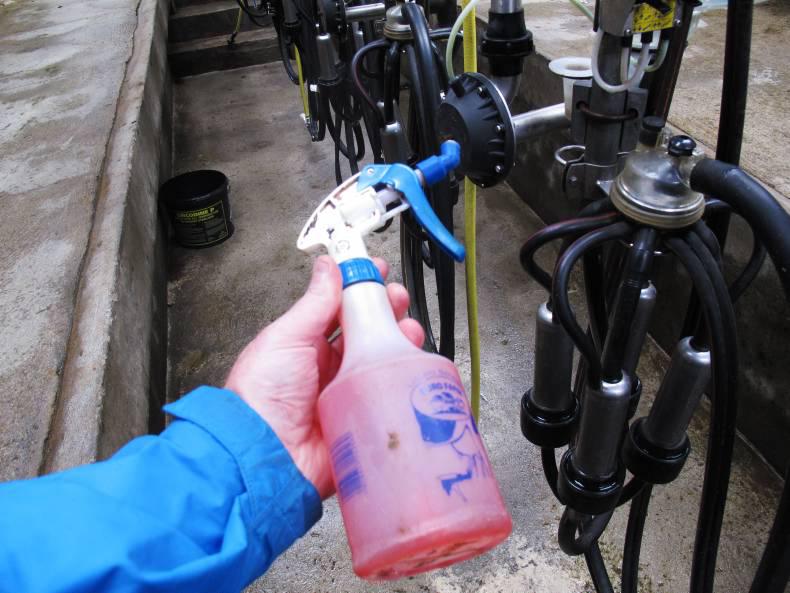
3 After milking, the cow’s teat canal is open so bugs could make their way up into the udder and cause mastitis. Proper teat spraying will kill most of the bugs on the teat. The total surface area of each teat must be sprayed and it is recommended to use at least 15ml of spray per cow. Some farmers use drop-down teat spray hoses while others use the handheld sprayers.
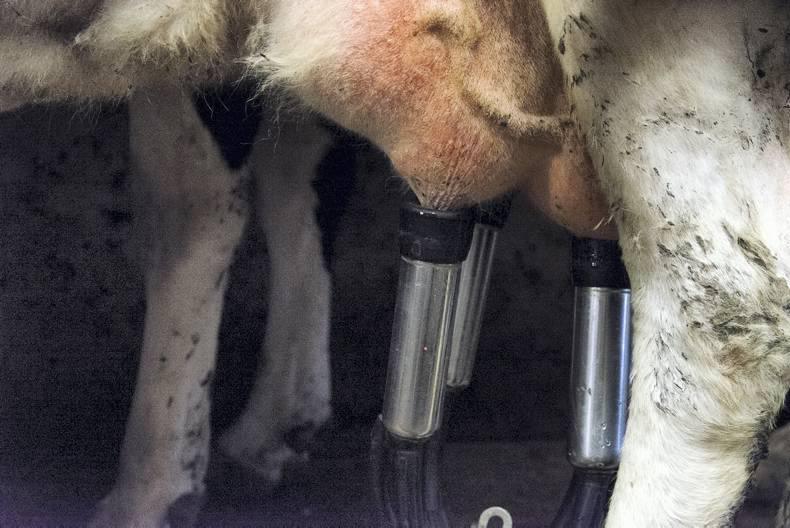
4 Milk liners should be replaced every 2,200 milkings. If you are milking 10 rows of cows twice a day, this means the liners should be changed every 3.6 months. Many farmers only change liners once or twice a year, but in many cases this is not enough. Old liners cause increased slippage and air intake and don’t milk out as well as new liners, which contributes to higher SCC.

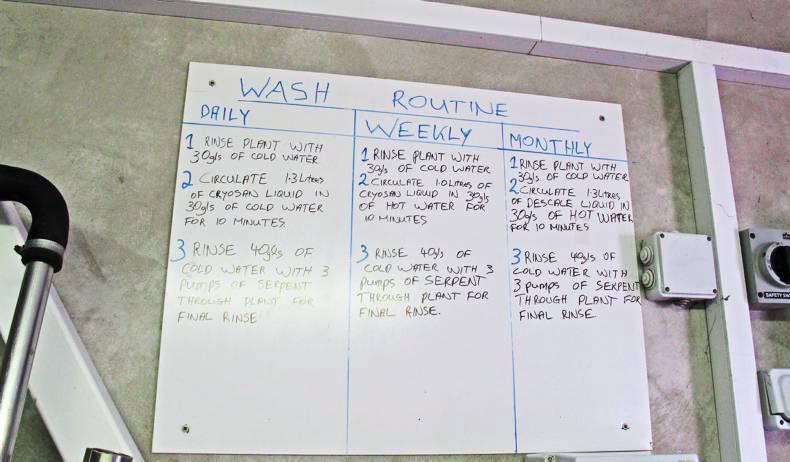




 This is a subscriber-only article
This is a subscriber-only article





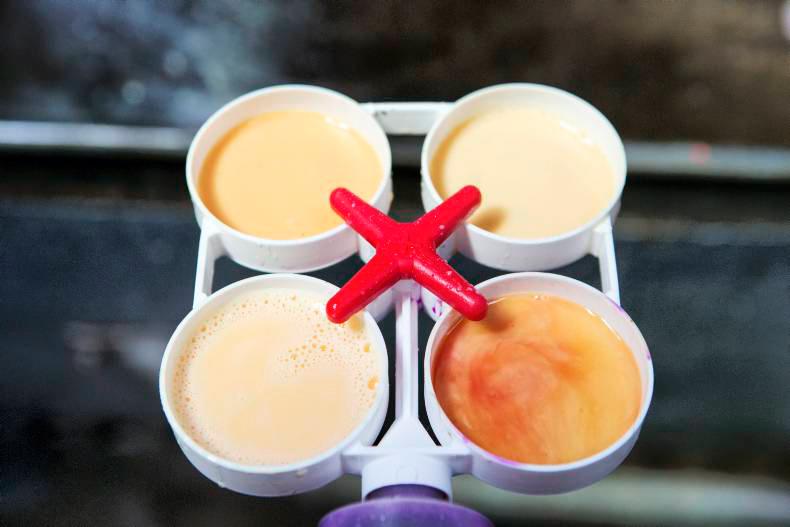
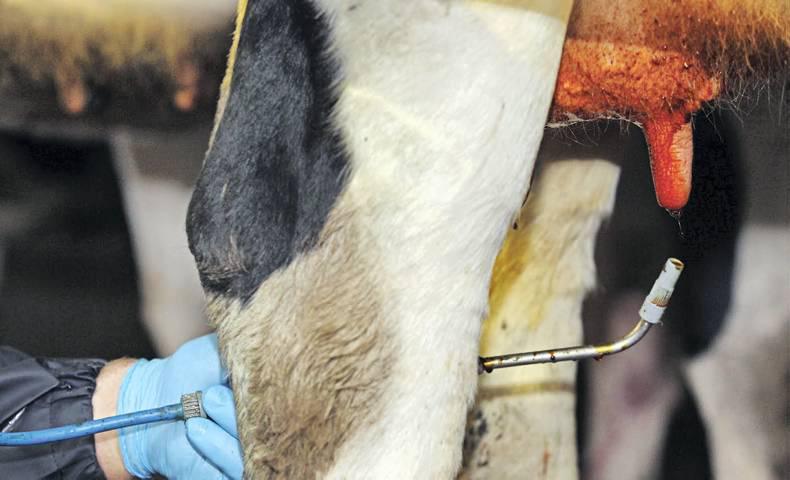
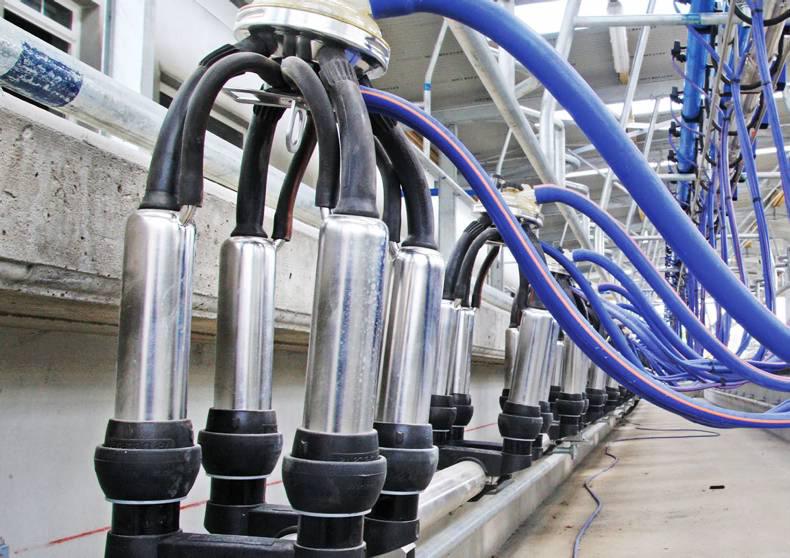





SHARING OPTIONS: